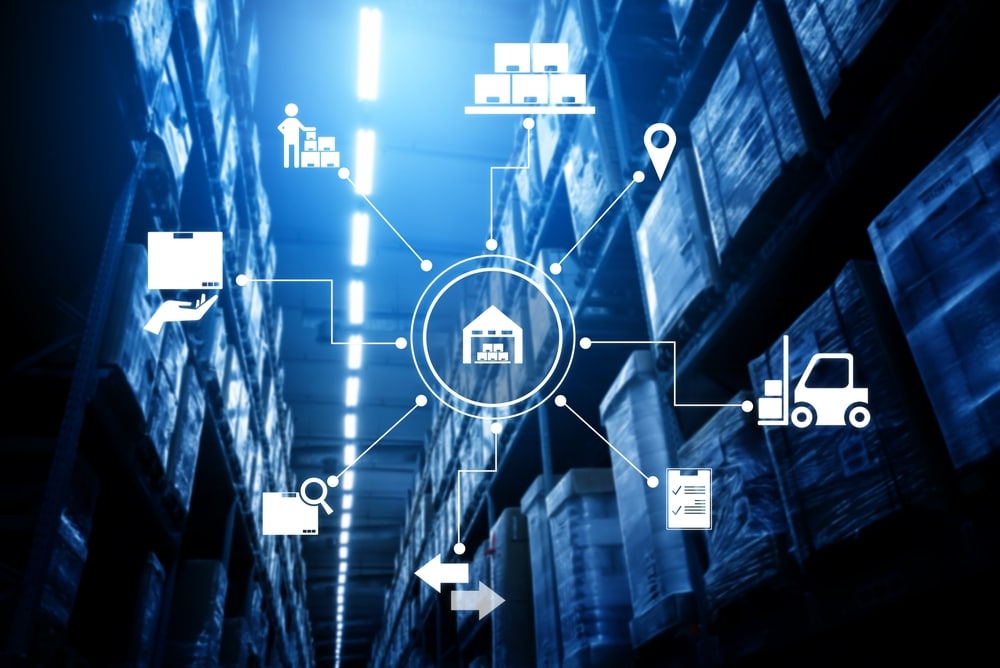The Internet of Things (IoT) has revolutionised industries across the globe, and the warehousing sector is no exception. With the rapid growth of e-commerce and increasing customer demands, warehouses are continuously seeking new ways to improve efficiency and streamline operations. IoT technology offers a powerful solution to address these challenges, providing numerous benefits that have a direct impact on the bottom line. This article will explore five key advantages of deploying IoT solutions in the warehouse: reduction in errors, streamlined fleet management, easier scalability, improved safety, and enhanced employee productivity.
1. Reduction in Errors
One of the most significant benefits of implementing IoT solutions in the warehouse is the potential for reducing errors. Human error can be costly in terms of time, money, and resources, but IoT technology can help minimise these mistakes. By automating processes such as inventory tracking, order picking, and shipping, IoT devices can significantly reduce the likelihood of errors occurring.
For example, IoT-enabled smart shelves can monitor inventory levels in real-time, alerting warehouse staff when stock is running low or when items are misplaced. Additionally, IoT-powered scanners can verify that the correct items are picked for each order, reducing the risk of incorrect shipments and subsequent returns. These automated systems not only save time and resources but also enhance customer satisfaction by ensuring accurate and timely deliveries.
2. Streamlined Fleet Management and Asset Tracking
Warehouse operations often rely on fleets of vehicles, such as forklifts and pallet jacks, to move goods throughout the facility. IoT technology can help streamline fleet management by providing real-time data on vehicle location, usage, and maintenance needs. This information allows warehouse managers to optimise vehicle deployment, reduce downtime, and ensure the most efficient use of resources.
For instance, IoT sensors can monitor vehicle performance and detect potential maintenance issues before they become critical, reducing the risk of unexpected breakdowns and costly repairs. Moreover, connected vehicles can be integrated into warehouse management systems (WMS), enabling better coordination and routing of vehicles to minimise delays and maximise productivity.
3. Easier to Scale Operations
As businesses grow and evolve, it’s crucial for warehouses to be able to scale operations accordingly. IoT technology enables warehouses to adapt more easily to changes in demand, allowing for seamless expansion or contraction as needed. With IoT devices collecting vast amounts of data on warehouse processes, managers can identify areas for improvement and make informed decisions about resource allocation, staffing levels, and facility layout.
Furthermore, IoT solutions can be rapidly deployed and integrated into existing systems, making it easier to implement new technologies as they become available. This flexibility is essential for maintaining a competitive edge in an ever-changing industry landscape.
4. Reduces Risks and Improves Safety
Warehouses can be hazardous environments, with the potential for accidents involving heavy machinery, falling objects, and other risks. IoT solutions can significantly improve safety by providing
real-time monitoring of equipment and working conditions, enabling warehouse managers to proactively address potential hazards.
For example, IoT sensors can detect excessive vibrations or temperatures in machinery, signalling the need for maintenance before a breakdown occurs. Wearable IoT devices can monitor employee movements and alert them to nearby hazards, such as approaching vehicles or unstable loads. By reducing the likelihood of accidents, IoT technology not only protects workers but also minimises the financial and reputational damage associated with workplace injuries.
5. Enhanced Employee Productivity
IoT technology can have a significant impact on employee productivity by automating manual tasks, providing real-time feedback, and optimising workflows. With IoT devices handling routine tasks such as inventory tracking and order processing, employees can focus on higher-value activities that require human expertise and judgement.
In addition, IoT-enabled analytics can provide insights into employee performance, helping managers identify areas for improvement and implement targeted training programs. By empowering employees with the tools and information they need to work more efficiently, IoT technology can boost job satisfaction and overall warehouse productivity.
In conclusion, deploying IoT solutions in the warehouse offers numerous benefits that can contribute to a more efficient, safe, and productive work environment. By reducing errors, streamlining fleet management, making it easier to scale operations, improving safety, and enhancing employee productivity, IoT technology is poised to transform the warehousing industry for the better, contact us below if you have any enquiries about connectivity in a warehouse.
To discuss implementing IoT into your warehouse get in touch with us using the contact form below.



